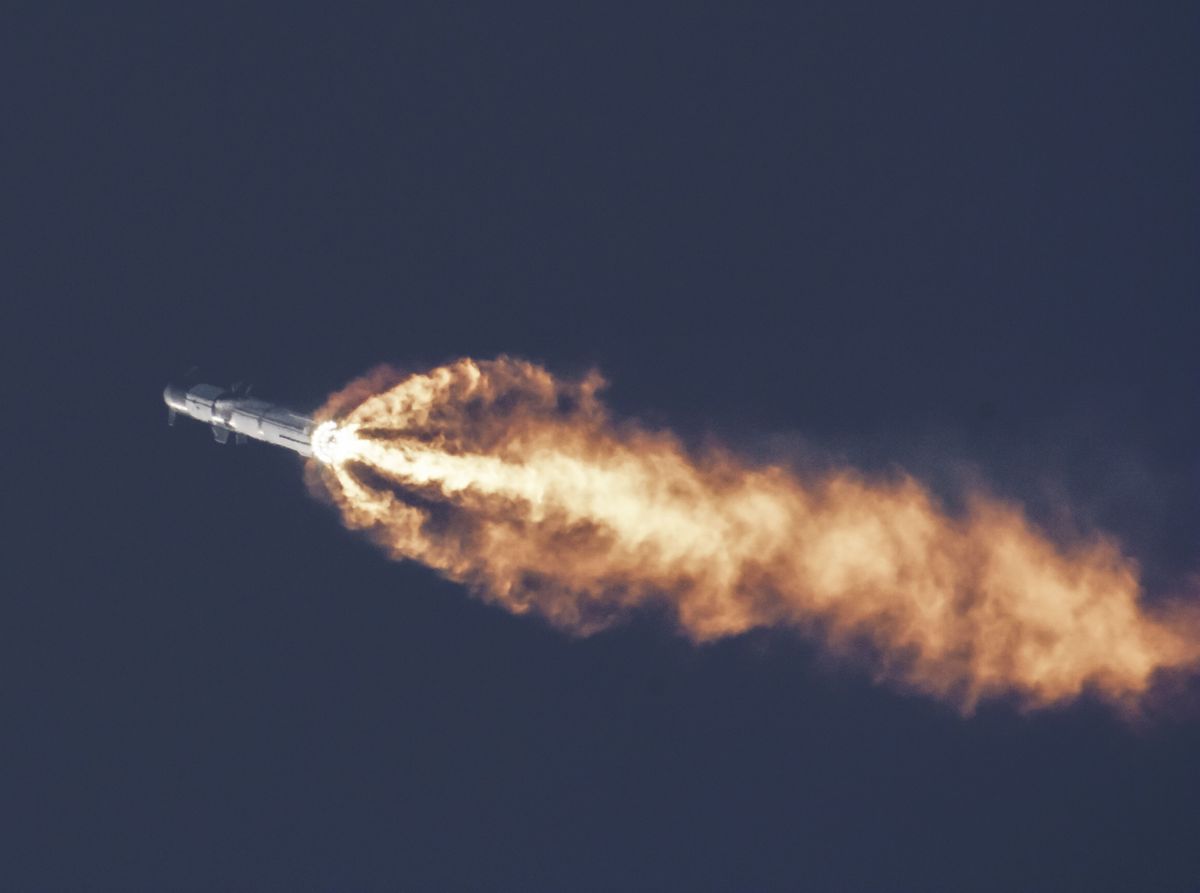Still, the power of 28 Raptors got Starship high into the sky. There was a brief, bright flash from those engines about 33 seconds into the flight, though it's unclear if this indicated anything off-nominal. Starship kept climbing and made it through the Max-Q gauntlet in one piece at around T+80 seconds, eliciting cheers from SpaceX headquarters in Hawthorne, California, where employees had gathered en masse to watch the liftoff.
The next big milestones were supposed to occur back to back to back just under three minutes after liftoff: Super Heavy engine shutdown, followed by stage separation and the lighting of the upper-stage vehicle's six Raptor engines.
But this is where Starship faltered. The vehicle appeared to start performing a prescribed flip ahead of stage separation, Insprucker said during the webcast. But Super Heavy's engines continued to burn and the vehicle began to tumble, sparking moans of concern from the crowd at SpaceX HQ.
Stage separation never came. And Super Heavy's engines appeared to keep firing long past the targeted cutoff point, which was two minutes and 49 seconds after liftoff(opens in new tab).
The full-stack Starship kept tumbling for another minute or so before exploding three minutes and 59 seconds after launch, likely because SpaceX activated the vehicle's flight termination system at this point.
https://www.space.com/spacex-starship-first-space-launch-what-we-saw
